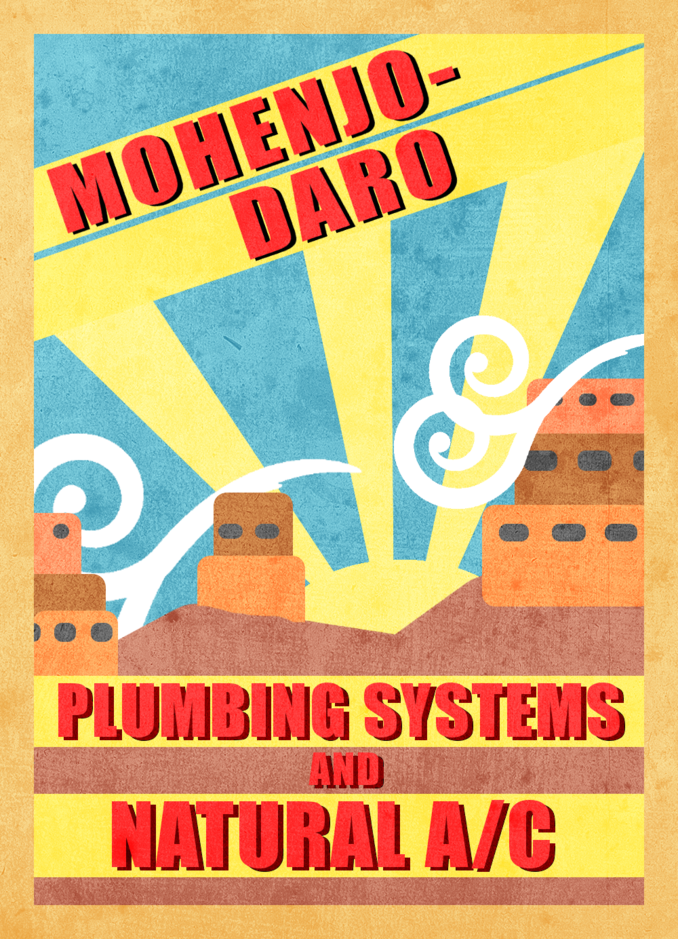


Indus River Valley Civilizations
the indus valley pep rally
THE INDUS RIVER VALLEY
Location: Surrounding the Indus River Basin
Time of Origin: c. 2500 BCE
-The Indus River provided fertile soil with its reliable flooding patterns.
-Location provides access to highlands, desert, and coastal environments
Time of Origin: c. 2500 BCE
-The Indus River provided fertile soil with its reliable flooding patterns.
-Location provides access to highlands, desert, and coastal environments
What are the characteristics of the Indus River Valley Civilizations?
A website by Raul, Mariel, Daisy, and Arjen


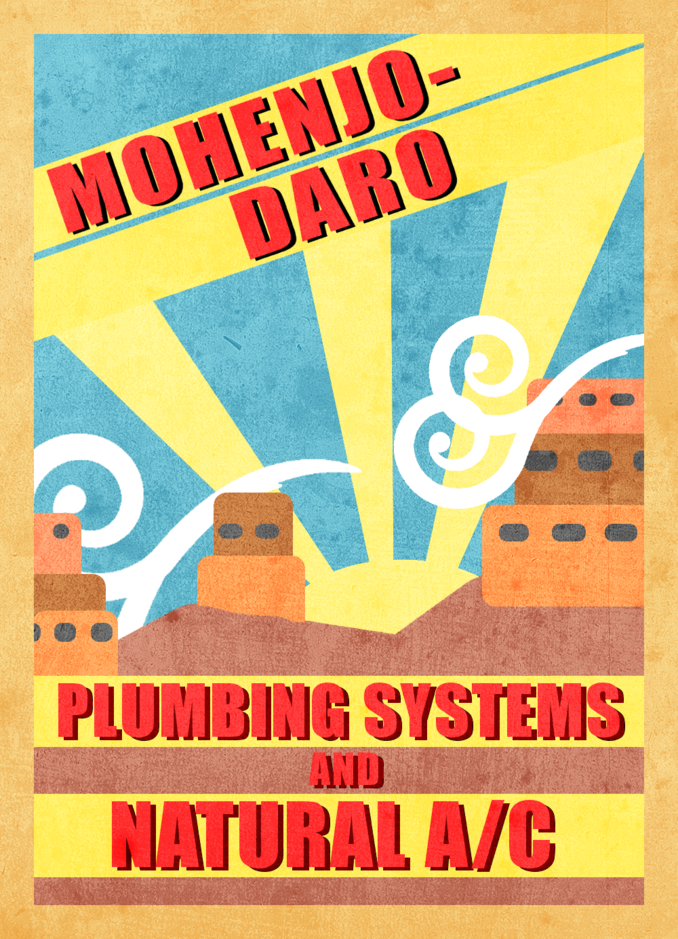
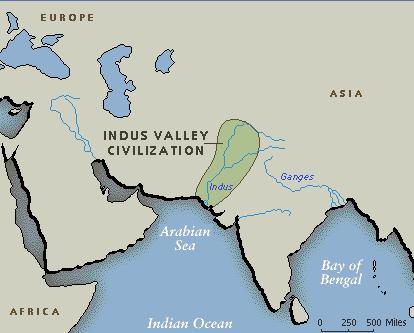
CULTURE AND RELIGION
- The people of the Indus River Valley had a written language, but it has yet to be deciphered.
- Houses in the Indus River Valley were uniformly placed in the city linked by perpendicular roads, and built in such a way that utilized wind as a form of "natural air conditioning."
- Indus River cities were much cleaner than other civilizations of its time. Houses were linked with a plumbing system that deposited waste to the outskirts of the city.
-The biggest building of the Indus River Valley was a large bathhouse known today as The Great Bath. Historians suggest this served some religious purpose, as it resembled a giant baptismal fountain.
- The people of the Indus River Valley were very peaceful, remaining neutral in war and owning few weapons.
- Houses in the Indus River Valley were uniformly placed in the city linked by perpendicular roads, and built in such a way that utilized wind as a form of "natural air conditioning."
- Indus River cities were much cleaner than other civilizations of its time. Houses were linked with a plumbing system that deposited waste to the outskirts of the city.
-The biggest building of the Indus River Valley was a large bathhouse known today as The Great Bath. Historians suggest this served some religious purpose, as it resembled a giant baptismal fountain.
- The people of the Indus River Valley were very peaceful, remaining neutral in war and owning few weapons.
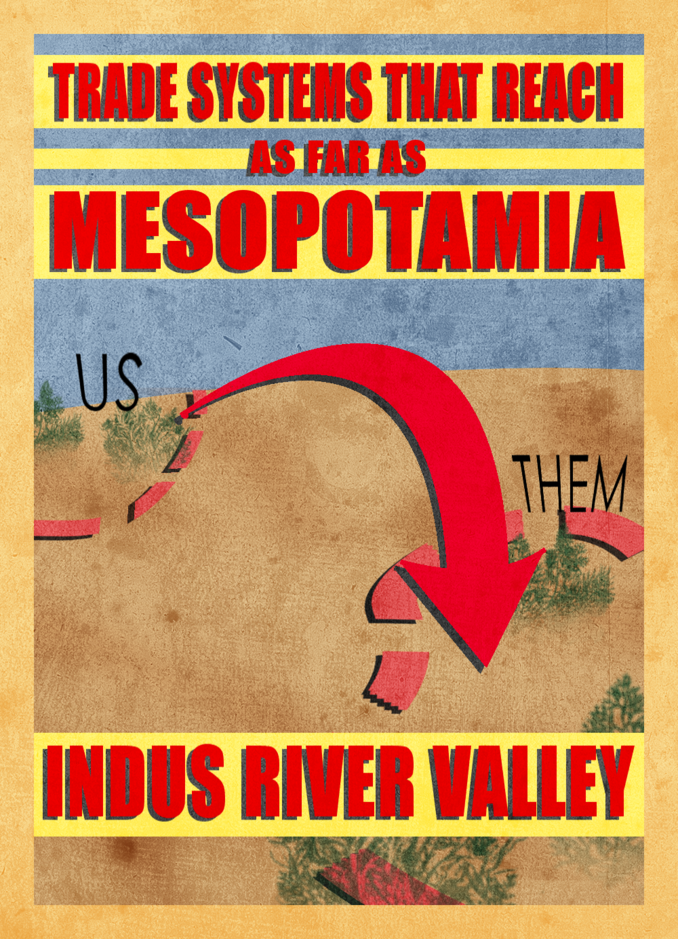
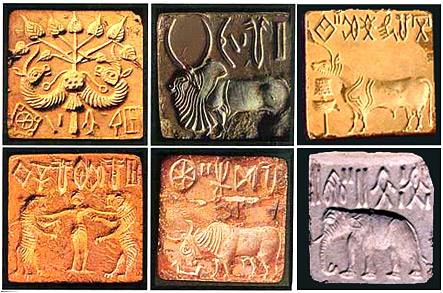
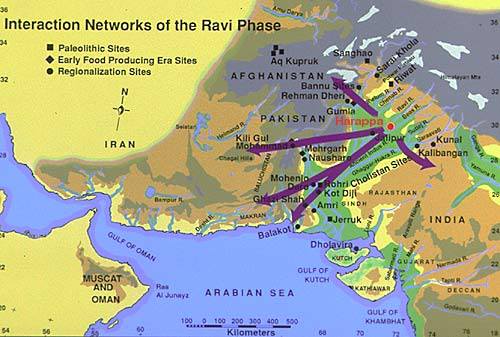
TRADE AND COMMERCE
- The Indus Valley people traded mainly cotton and cloth products in order to obtain things they could not produce themselves.
- Mesopotamian Civilization was a major trade partner.
- Various seals made of terra cotta were used in trade to identify the names of the traders that provided the products involved. (a concept other civilizations did not utilize)
- Traders used bullock carts and riverboats as means of transportation.
- Mesopotamian Civilization was a major trade partner.
- Various seals made of terra cotta were used in trade to identify the names of the traders that provided the products involved. (a concept other civilizations did not utilize)
- Traders used bullock carts and riverboats as means of transportation.


THE DECLINE OF THE
INDUS RIVER VALLEY
INDUS RIVER VALLEY
There are four theories surrounding the sudden decline of the Indus River Valley culture:
1. The peaceful, pacifist nature of the Indus River cities made them susceptible to conquest by neighboring cities. (Historians speculate that the Aryans did it.)
2. An extensive use of agriculture uses up all the resources in the land and forces the Indus people to migrate elsewhere.
3. A major earthquake changes the course of the rivers so they do not flood for the benefit of the people.
4. The Indus people simply packed up and left because they could not put up with the frequency of the floods. (Multiple layers of construction suggest frequent destruction and rebuilding.)
1. The peaceful, pacifist nature of the Indus River cities made them susceptible to conquest by neighboring cities. (Historians speculate that the Aryans did it.)
2. An extensive use of agriculture uses up all the resources in the land and forces the Indus people to migrate elsewhere.
3. A major earthquake changes the course of the rivers so they do not flood for the benefit of the people.
4. The Indus people simply packed up and left because they could not put up with the frequency of the floods. (Multiple layers of construction suggest frequent destruction and rebuilding.)

